Peonies are one of the most beautiful flowering plants. Several color of the bruises of the bruises can decorate almost any flowerbed, becoming the central part of the garden composition. One of the most common types of these plants are tree peonies. Some biologists believe that the woody peony is not a separate type of culture, and represents only a group of varieties that are similar to among themselves. These flowers were bred in China, and on the European continent appeared only closer to the middle of the 18th century. This very beautiful plant is not in vain deserved tremendous popularity among gardeners. On how to plant the tree-like peony in the spring and grow it - we will tell further.
Description of tree peonies
The main characteristics of the tree peonies are as follows:
- The plant is a shrub, which, unlike herbaceous peony, has dried stems. For the winter, they do not die, but are covered with a fine bark, forming a tree shrub. Due to this, the tree-like peony is a frost-resistant plant and can easily be overwhelmed in medium latitudes.
- In the spring, the main branches give new shoots, at the end of which buds are formed. The flower of tree peony, like his herbal fellow, is quite large and reaches 200 mm in diameter.
- A wide palette of coloring from bright to pastel tones, as well as various forms of petals: simple, terry and semi-world make it possible to plant a unique flower leaf from plants of this species.
- Recently, several varieties with two-color buds are derived by breeders. The number of colors on the bush increases with each year of his life.
- The flowering of a tree peony begins for 2-3 weeks earlier than herbaceous varieties and continues to the crescent.
Types and varieties of tree peonies
Valid pony sorts are quite a lot. However, all this diversity went from 4 species that met in the wild. All of them belong to the group of semi-student peonies. These are kinds like:
- Pion Potanina.
- Peony Lemian.
- Peony made.
- Yellow peony.
All modern varieties of tree peon can be divided into several groups:
- Japanese varieties. The varieties of this group are distinguished by small flowers. Due to this, they look light and very beautiful.
- Sapphire. Peonies of this group have rather impressive buds, the diameter of which in the open form comes up to 20 cm. Inflorescence is predominantly pink with a dark crimson core. Sapphire peonies are quite productive that in some cases leading to the appearance on one bush to fifty buds.
- Green Jade. An original group of varieties that attracts light green flowers to itself. Thanks to this originality, Green Jade varieties are very loved by those gardeners, which are always open to experiments.
- Kiao sisters. Small flowers, mostly two shades. Due to the combination of gentle cream and dark red, suitable for any flowerbed.
- Hybrids of yellow peony and peony done. Have large chemicals of yellow color.
- Sino-European varieties. They differ in large and heavy colors, why the inflorescence looks downstream. The color scheme is quite wide and is represented by shades from the pale pink to dark burgundy.
Landing a tree peony in spring in the ground
Soot tree-like peony in spring or autumn. There is no fundamental difference in this, but, according to experienced gardeners, plants planted in spring, are distinguished by greater resistance to weather changes and freezers. First of all, when disembarking, tree peonies, it is necessary to determine the site on which they will grow. These plants love the sunlight, so it is better to give preference to a well-lit area away from high trees or buildings that create a shadow.
From the soils for growing tree peonies, loams are most preferred. If there are no on the site, it will have to make clay, derm, fertilizer, peat, etc. into the sandy ground. With the right selection of the soil, you can achieve very good results in terms of the longevity of the plant. Some varieties of tree peonies can successfully grow and blossom for quite a long time (several decades).
Planting a tree peony in the spring to open ground is carried out in the following sequence:
- The tree peonies are planted in a hole in a depth of about 70 cm. Its diameter at the surface should be the same. Closer to the bottom of the pit for landing should narrow, forming a truncated cone.
- To ensure a normal drainage on the bottom of the pit lays the pebbles, a broken brick or broken ceramic pots. If any, you can use ordinary river sand. The drainage layer should be at least 20 cm thick.
- With increased acidity of the soil, bone flour or lime is made at the rate of 200-300 grams per bun. After that, a cone from a simple land is poured into the pit at a low height, and plants are placed there. It is necessary to do it in such a way that its roots slip across the slopes of the cone.
- After the tree-like peony is placed on a cone, a large amount of water is poured into the pit. It will help roots well "fluffy" and stay in the ground.
- As soon as the water is completely absorbed, the pit can be filled with soil. It is necessary to do this in such a way that the root neck is on the same level with the Earth.
- When landing several buns of a tree peony, it is necessary to withstand the minimum distance between them, which is 1.5-2 meters. As you can see, the plant planting the plant is not too complicated and completely under the nearest gardener.
The cultivation of a tree peony from seeds practiced quite rarely. The plant is very bad, it grows for a long time and blooms at best by 4-5 years after sowing. Due to the underdevelopment of the embryos, the plant seeds must be stratified. In addition, they simply can not be stored for a long time, because as a result, the percentage of germination will be even less.
Care for tree peony spring
There is no particular difference between the principles of the care of tree and grassy peonies, so for those who already familiarize the latter, there will be no special problems.
Care rules:
- The frequency of watering and its intensity is almost the same. In not too hot and dry weather, the bushes watered 1 time in 2 weeks. The average dose size is 5-6 liters for each bush. With increasing temperature and decrease in humidity, the irrigation rate is increased. Gradually, with the end of the summer, watering is reduced, and closer to September is stopped at all.
- After drying the soil, it is desirable to be exploded at a distance of the half meter from the center of the bush. The depth of loosening should be small, since the roots of the tree peony can be at a distance of just over 5 cm from the surface.
- Fucking tree peonies in the spring must be carried out at mandatory. The need for fertilizers is the largest among flower plants. The intensity and quality of flowering plants depends on weakness in mineral substances. So, at the beginning of the season of vegetation, the soil fertilize nitrogen fertilizers. Throughout the period of vegetation in the soil, phosphate and potash feeders additionally contribute, and nitrogen is added before the fall. The number of one or another fertilizer depends on the concentration of the active substance. It is important here to observe the golden middle, especially with regard to nitrogen. Its oversupply can provoke the beginning of the disease with a gray rot, which can lead to the death of the plant.
- The transplantation of a tree peony in the spring is carried out only in the event of an extremely needed, because this procedure the plant transfers extremely painful. Even if everything is done correctly, there is a big risk that the woody peony will figure it out and will take off in a new place for a long time. Naturally, no about blossoming here cannot be speech. If still such a need originated, it is necessary to neatly dig a bush with a piece of land, and under a small pressure of the water, wash it off, freeing the root system. Then you need to carefully examine the roots for damage and traces of rot. If so are there, they are removed. It is also desirable to cut long roots a little, after which the sections of the sections are processed with the help of manganese.
Breeding of tree peonies in spring
The reproduction of tree peonies is carried out in three ways:
- Cuttings.
- Dividing bush.
- Digging.
- Vaccinations.
Consider them in more detail:
- The reproduction of cuttings is a rather complicated way. To do this, in the middle of summer, cuttings are harvested from the generated bush, which stick into a container with sand and peat, after which they are covered with film. As soon as the roots appear on the cuttings, they are transplanted into pots with soil and grown to spring, after which they plant in open ground.
- Reproduction Dellets is the easiest and most common method among lovers. It consists in dividing one mature bush for 2 or more small. The age of the maternal individual must be at least 5-6 years. Each decene landed in the same way as an ordinary bush.
- Reproduction with removal. Gives the result only 2-3 years after the operation. It is as follows. A developed plant before the flowering period is taken by one of the strongest shoots and is cut a little in the middle. Then the place of the outbreak, which must be predetermined, it leans towards the ground and presses inside. So that the removal does not spring up, it is fastened with stakes, and sprinkle the soil layer. You need to water the discharge with the parent plant. After its rooting, it is separated from the plant and transplanted into a separate place.
- Reproduction by vaccinations make mainly on an industrial scale. It is in the vaccination of a small stalk of a tree-like peony to a grassy individual.
Diseases of tree peonies in spring
The most common disease of the tree peony is gray rot. The cause of this disease is the activity of the pathogenic fungus, which can fall into the soil with infected plants. Fight with data ailment with manganese or copper mall. The first substance is divorced at the rate of 3 g / 10 liters of water, the second is 30 g / 10 liters of water. In case of activity, it is necessary to remove and burn all the affected plants or their parts. The prevention of the appearance of sulfur rot is observing the rules of irrigation and feeding plants.

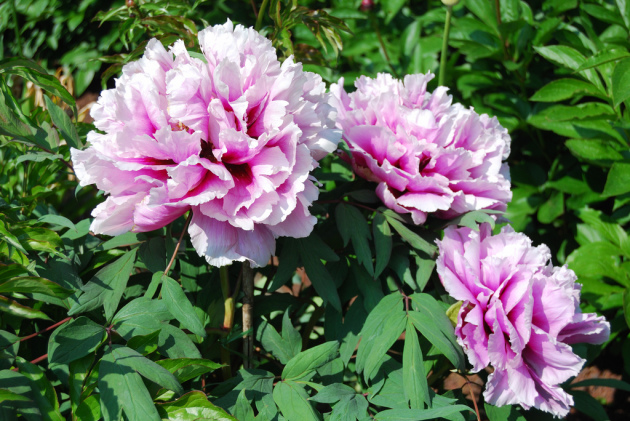

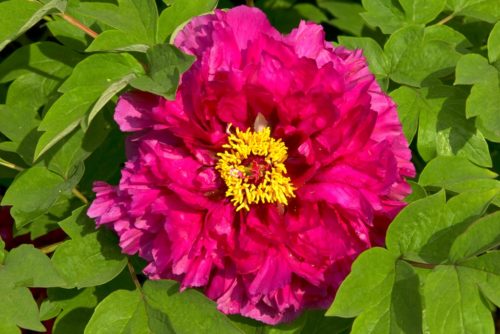
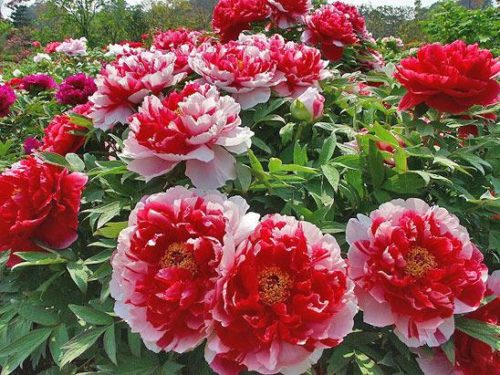
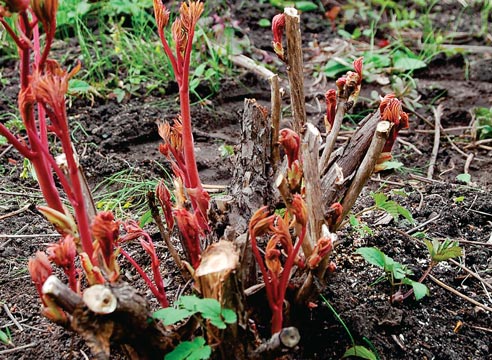
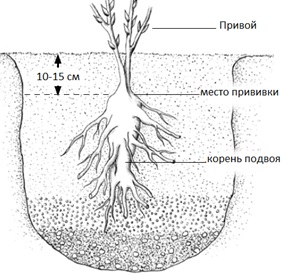
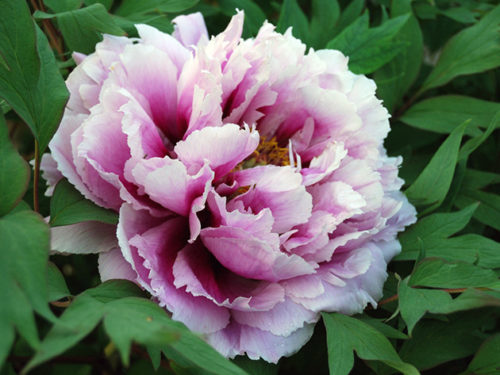
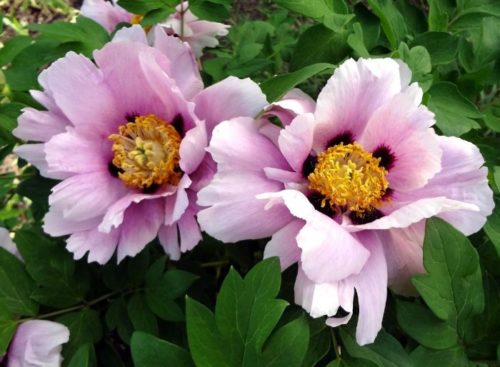
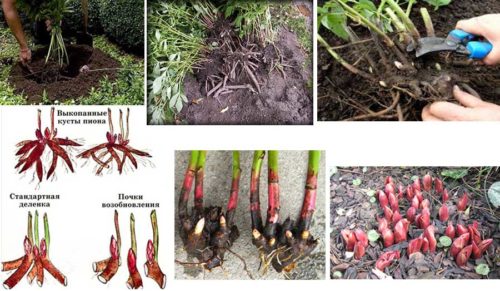
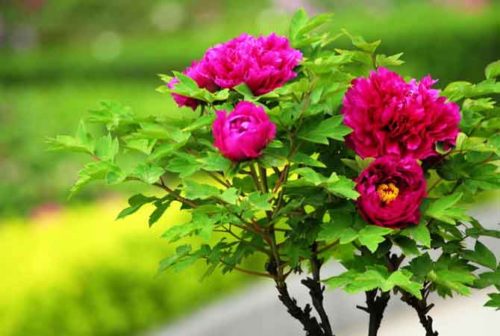
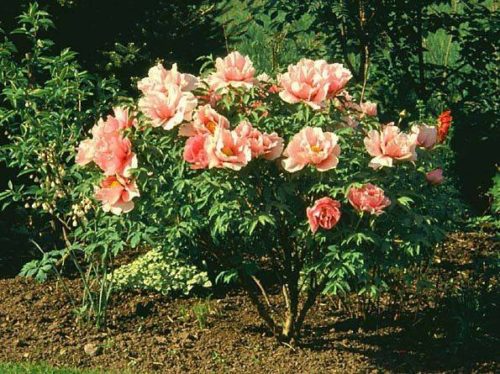












 Start a discussion ...
Start a discussion ...